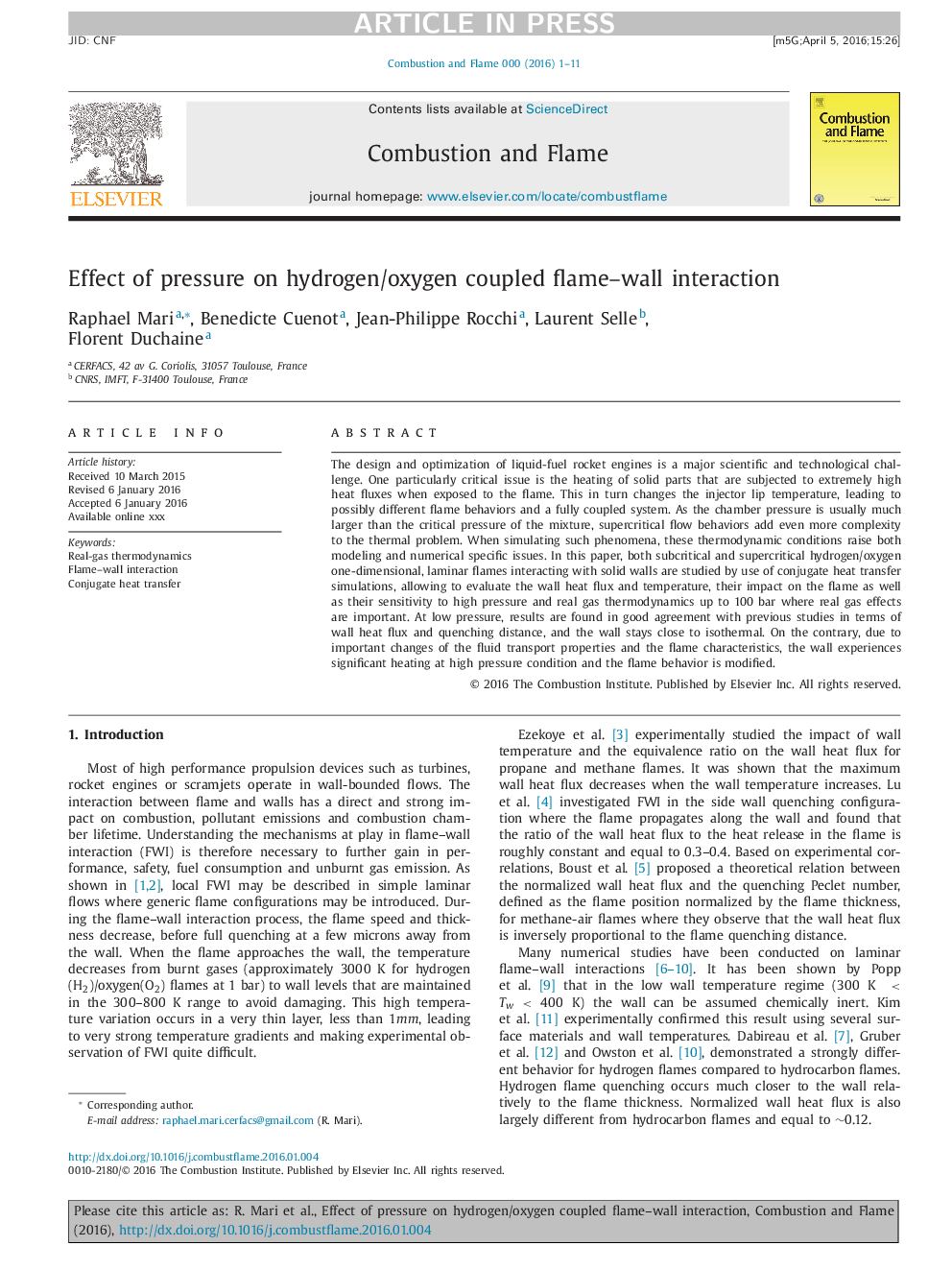| Article ID | Journal | Published Year | Pages | File Type |
|---|---|---|---|---|
| 6594071 | Combustion and Flame | 2016 | 11 Pages |
Abstract
The design and optimization of liquid-fuel rocket engines is a major scientific and technological challenge. One particularly critical issue is the heating of solid parts that are subjected to extremely high heat fluxes when exposed to the flame. This in turn changes the injector lip temperature, leading to possibly different flame behaviors and a fully coupled system. As the chamber pressure is usually much larger than the critical pressure of the mixture, supercritical flow behaviors add even more complexity to the thermal problem. When simulating such phenomena, these thermodynamic conditions raise both modeling and numerical specific issues. In this paper, both subcritical and supercritical hydrogen/oxygen one-dimensional, laminar flames interacting with solid walls are studied by use of conjugate heat transfer simulations, allowing to evaluate the wall heat flux and temperature, their impact on the flame as well as their sensitivity to high pressure and real gas thermodynamics up to 100Â bar where real gas effects are important. At low pressure, results are found in good agreement with previous studies in terms of wall heat flux and quenching distance, and the wall stays close to isothermal. On the contrary, due to important changes of the fluid transport properties and the flame characteristics, the wall experiences significant heating at high pressure condition and the flame behavior is modified.
Related Topics
Physical Sciences and Engineering
Chemical Engineering
Chemical Engineering (General)
Authors
Raphael Mari, Benedicte Cuenot, Jean-Philippe Rocchi, Laurent Selle, Florent Duchaine,
